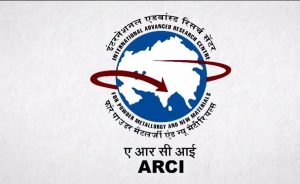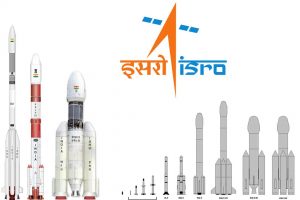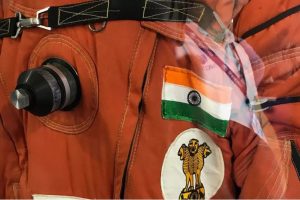 On March 5, 2020, the Department of Science of Technology operating under Ministry of Science and Technology organized an International Conference on Nano-Science and Nano Technology (ICONSAT) at Kolkata. The Conference is to be held between March 5, 2020 and March 7, 2020. On March 5, 2020, the Department of Science of Technology operating under Ministry of Science and Technology organized an International Conference on Nano-Science and Nano Technology (ICONSAT) at Kolkata. The Conference is to be held between March 5, 2020 and March 7, 2020. |
|
|
 The International Advanced Research for Powder Metallurgy & New Materials (ARCI), Hyderabad has developed a fuel cell technology called Polymer Electrolyte Membrane fuel cells (PEMFC). The ARCI, Hyderabad is an autonomous R&D Centre of Department of Science and Technology (DST). It has developed an in-house PEMFC systems in the power range of 1 to 20 kiloWatt (kW) for Disaster Management. The International Advanced Research for Powder Metallurgy & New Materials (ARCI), Hyderabad has developed a fuel cell technology called Polymer Electrolyte Membrane fuel cells (PEMFC). The ARCI, Hyderabad is an autonomous R&D Centre of Department of Science and Technology (DST). It has developed an in-house PEMFC systems in the power range of 1 to 20 kiloWatt (kW) for Disaster Management. |
|
 The Department of Telecommunications (DoT) has launched the ‘5G Hackathon’ in association with the government of India, academia and industry stakeholders. The aim of 5G Hackathon is shortlisting India’s focused cutting edge ideas that can be converted into workable 5G products and solutions. The Hackathon will be spread across three phases. The event will culminate in a grand felicitation ceremony at India Mobile Congress on 16 October 2020. Winners of the various phases of the 5G Hackathon will share a total prize pool of Rs. 2.5 crore.The 5G technology provides quantum leap over 4G in terms of speed, peak data rate, latency, spectrum efficiency, and connection density. The Hackathon will convert innovating ideas into products and solutions in different verticals and develop India specific use cases around 5G. The 5G Hackathon is open to developers, students, start-ups, SMEs, academic institutions and registered companies in India and Non-resident Indians (NRIs). All Stakeholders can participate as individuals or as a team to present use cases for the 5G network in the Indian context. The Department of Telecommunications (DoT) has launched the ‘5G Hackathon’ in association with the government of India, academia and industry stakeholders. The aim of 5G Hackathon is shortlisting India’s focused cutting edge ideas that can be converted into workable 5G products and solutions. The Hackathon will be spread across three phases. The event will culminate in a grand felicitation ceremony at India Mobile Congress on 16 October 2020. Winners of the various phases of the 5G Hackathon will share a total prize pool of Rs. 2.5 crore.The 5G technology provides quantum leap over 4G in terms of speed, peak data rate, latency, spectrum efficiency, and connection density. The Hackathon will convert innovating ideas into products and solutions in different verticals and develop India specific use cases around 5G. The 5G Hackathon is open to developers, students, start-ups, SMEs, academic institutions and registered companies in India and Non-resident Indians (NRIs). All Stakeholders can participate as individuals or as a team to present use cases for the 5G network in the Indian context. |
 On February 19, 2020, the Union Cabinet approved to set a technology group. The 12-member group will provide scientific advice on mapping of technologies, commercialization of dual use technologies and develop a road map on selected key technologies. The group will provide three major pillars of support namely Policy support, research and development proposals and procurement support. On February 19, 2020, the Union Cabinet approved to set a technology group. The 12-member group will provide scientific advice on mapping of technologies, commercialization of dual use technologies and develop a road map on selected key technologies. The group will provide three major pillars of support namely Policy support, research and development proposals and procurement support. |
|
|
 The Indian Space Research Organisation has revealed in its annual report for 2019-20 that it will launch 10 Earth Observation Satellites in 2020-21. The 10 earth observation (EO) satellites will include categories such as the first Geo Imaging Satellite, GISAT-1 along with three communication satellites and two navigation satellites. The Indian Space Research Organisation’s annual report for 2019-20 plan also mentions 36 missions including satellites and their launchers. The Indian Space Research Organisation has revealed in its annual report for 2019-20 that it will launch 10 Earth Observation Satellites in 2020-21. The 10 earth observation (EO) satellites will include categories such as the first Geo Imaging Satellite, GISAT-1 along with three communication satellites and two navigation satellites. The Indian Space Research Organisation’s annual report for 2019-20 plan also mentions 36 missions including satellites and their launchers. |
|
 NASA (National Aeronautics and Space Administration) of the United States and the ESA (European Space Agency) will send space probes to the sun to map its poles. The solar orbiter was launched on February 9, 2020. NASA (National Aeronautics and Space Administration) of the United States and the ESA (European Space Agency) will send space probes to the sun to map its poles. The solar orbiter was launched on February 9, 2020. |
|
|
 The Indian Space Research Organisation (ISRO) has announced that it is preparing low-cost satellite launch vehicles costing around 30-35 crores each. These low-cost launch vehicles can put into orbit satellites weighing 500 kgs. This capability will give ISRO a big commercial boost as it will be able to cater to micro, mini and medium segments of the market. The biggest advantage is that ISRO now can manufacture these vehicles in a turnaround time of just 3 weeks’ time. The Indian Space Research Organisation (ISRO) has announced that it is preparing low-cost satellite launch vehicles costing around 30-35 crores each. These low-cost launch vehicles can put into orbit satellites weighing 500 kgs. This capability will give ISRO a big commercial boost as it will be able to cater to micro, mini and medium segments of the market. The biggest advantage is that ISRO now can manufacture these vehicles in a turnaround time of just 3 weeks’ time. |
 France will train Indian flight surgeons for the ambitious human space mission Gaganyaan. The training is a critical aspect of the Gaganyaan project that is aimed at sending three Indians to space by 2022. The flight surgeons, who will be Indian Air Force doctors specialising in aviation medicines and responsible for the health of astronauts before, during and after the flight. France has a well-established mechanism for space medicine. It also has the MEDES space clinic, a subsidiary of CNES, where space surgeons undergo training. The four shortlisted astronauts all test pilots from the Indian Air Force are currently in Russia for an 11-month training programme. France will train Indian flight surgeons for the ambitious human space mission Gaganyaan. The training is a critical aspect of the Gaganyaan project that is aimed at sending three Indians to space by 2022. The flight surgeons, who will be Indian Air Force doctors specialising in aviation medicines and responsible for the health of astronauts before, during and after the flight. France has a well-established mechanism for space medicine. It also has the MEDES space clinic, a subsidiary of CNES, where space surgeons undergo training. The four shortlisted astronauts all test pilots from the Indian Air Force are currently in Russia for an 11-month training programme. |
 ISRO will launch GSAT-30 satellite onboard Ariane-5 launch vehicle (VA 251) from French Guiana on January 17, 2020. GSAT-30 is a communication satellite of India which is configured on ISRO’s enhanced I-3K Bus structure to provide communication services from Geostationary orbit in C and Ku bands. The satellite derives its heritage from ISRO’s earlier INSAT/GSAT satellite series. The Weighing 3357 kg, GSAT-30 is to serve as a replacement to INSAT-4A spacecraft services with enhanced coverage. The satellite provides Indian mainland and islands coverage in Ku-band and extended coverage in C-band covering Gulf countries, a large number of Asian countries and Australia. ISRO will launch GSAT-30 satellite onboard Ariane-5 launch vehicle (VA 251) from French Guiana on January 17, 2020. GSAT-30 is a communication satellite of India which is configured on ISRO’s enhanced I-3K Bus structure to provide communication services from Geostationary orbit in C and Ku bands. The satellite derives its heritage from ISRO’s earlier INSAT/GSAT satellite series. The Weighing 3357 kg, GSAT-30 is to serve as a replacement to INSAT-4A spacecraft services with enhanced coverage. The satellite provides Indian mainland and islands coverage in Ku-band and extended coverage in C-band covering Gulf countries, a large number of Asian countries and Australia. |
 On January 6, 2020, the ISRO proposed 2,700 crores of infrastructure plan to construct Human Space Flight Infrastructure Centre. The facility is to be set up at Challakere, Chitradurga district of Karnataka and is expected to become operational in three years. On January 6, 2020, the ISRO proposed 2,700 crores of infrastructure plan to construct Human Space Flight Infrastructure Centre. The facility is to be set up at Challakere, Chitradurga district of Karnataka and is expected to become operational in three years. |
|
|
You need to login to perform this action.
You will be redirected in
3 sec
